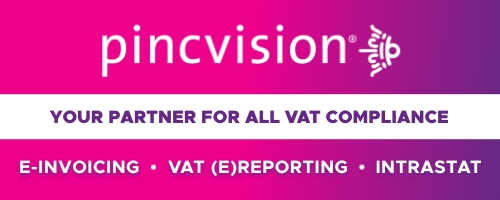Council Directive (EU) 2020/284 of 18 February 2020 amending Directive 2006/112/EC as regards introducing certain requirements for payment service providers
Source eur-lex
New articles in the EU VAT Directive 2006/112/EC applicable as of Jan 1, 2024
Article 243a
For the purposes of this Section, the following definitions apply:
(1) “payment service provider” means any of the categories of payment service providers listed in points (a) to (d) of Article 1(1) of Directive (EU) 2015/2366 of the European Parliament and of the Council (*) or a natural or legal person benefiting from an exemption in accordance with Article 32 of that Directive;
(2) “payment service” means any of the business activities set out in points (3) to (6) of Annex I to Directive (EU) 2015/2366;
(3) “payment” means, subject to the exclusions provided for in Article 3 of Directive (EU) 2015/2366, a “payment transaction ” as defined in point (5) of Article 4 of that Directive or a “money remittance” as defined in point (22) of Article 4 of that Directive;
(4) “payer” means “payer” as defined in point (8) of Article 4 of Directive (EU) 2015/2366;
(5) “payee” means “payee”as defined in point (9) of Article 4 of Directive (EU) 2015/2366;
(6) “home Member State” means “home Member State ” as defined in point (1) of Article 4 of Directive (EU) 2015/2366;
(7) “host Member State” means “host Member State” as defined in point (2) of Article 4 of Directive (EU) 2015/2366;
(8) “payment account” means “payment account” as defined in point (12) of Article 4 of Directive (EU) 2015/2366;
(9) “IBAN” means “IBAN” as defined in point (15) of Article 2 of Regulation (EU) No 260/2012 of the European Parliament and of the Council (**);
(10) “BIC” means “BIC” as defined in point (16) of Article 2 of Regulation (EU) No 260/2012.
Article 243b
1. Member States shall require payment service providers to keep sufficiently detailed records of payees and of payments in relation to the payment services they provide for each calendar quarter to enable the competent authorities of the Member States to carry out controls of the supplies of goods and services which, in accordance with the provisions of Title V, are deemed to take place in a Member State, in order to achieve the objective of combating VAT fraud.
The requirement referred to in the first subparagraph shall apply only to payment services provided as regards cross-border payments. A payment shall be considered a cross-border payment when the payer is located in a Member State and the payee is located in another Member State, in a third territory or in a third country.
2. The requirement to which payment service providers are subject under paragraph 1 shall apply where, in the course of a calendar quarter, a payment service provider provides payment services corresponding to more than 25 cross-border payments to the same payee.
The number of cross-border payments referred to in the first subparagraph of this paragraph shall be calculated by reference to the payment services provided by the payment service provider per Member State and per identifier as referred to in Article 243c(2). Where the payment service provider has information that the payee has several identifiers the calculation shall be made per payee.
3. The requirement laid down in paragraph 1 shall not apply to payment services provided by the payment service providers of the payer as regards any payment where at least one of the payment service providers of the payee is located in a Member State, as shown by that payment service provider’s BIC or any other business identifier code that unambiguously identifies the payment service provider and its location. The payment service providers of the payer shall nevertheless include those payment services in the calculation referred to in paragraph 2.
4. Where the requirement for payment service providers laid down in paragraph 1 applies, the records shall:
(a) be kept by the payment service provider in electronic format for a period of three calendar years from the end of the calendar year of the date of the payment;
(b) be made available in accordance with Article 24b of Regulation (EU) No 904/2010 to the home Member State of the payment service provider, or to the host Member States when the payment service provider provides payment services in Member States other than the home Member State.
Article 243c
1. For the application of the second subparagraph of Article 243b(1) and without prejudice to the provisions of Title V, the location of the payer shall be considered to be in the Member State corresponding to:
(a) the IBAN of the payer’s payment account or any other identifier which unambiguously identifies, and gives the location of, the payer, or in the absence of such identifiers,
(b) the BIC or any other business identifier code that unambiguously identifies, and gives the location of, the payment service provider acting on behalf of the payer.
2. For the application of the second subparagraph of Article 243b(1), the location of the payee shall be considered to be in the Member State, third territory or third country corresponding to:
(a) the IBAN of the payee’s payment account or any other identifier which unambiguously identifies, and gives the location of, the payee, or in the absence of such identifiers,
(b) the BIC or any other business identifier code that unambiguously identifies, and gives the location of, the payment service provider acting on behalf of the payee.
Article 243d
1. The records to be kept by the payment service providers, pursuant to Article 243b, shall contain the following information:
(a) the BIC or any other business identifier code that unambiguously identifies the payment service provider;
(b) the name or business name of the payee, as it appears in the records of the payment services provider;
(c) if available, any VAT identification number or other national tax number of the payee;
(d) the IBAN or, if the IBAN is not available, any other identifier which unambiguously identifies, and gives the location of, the payee;
(e) the BIC or any other business identifier code that unambiguously identifies, and gives the location of, the payment service provider acting on behalf of the payee where the payee receives funds without having any payment account;
(f) if available, the address of the payee as it appears in the records of the payment services provider;
(g) the details of any cross-border payment as referred to in Article 243b(1);
(h) the details of any payment refunds identified as relating to the cross-border payments referred to in point (g).
2. The information referred to in points (g) and (h) of paragraph 1 shall contain the following details:
(a) the date and time of the payment or of the payment refund;
(b) the amount and the currency of the payment or of the payment refund;
(c) the Member State of origin of the payment received by or on behalf of the payee, the Member State of destination of the refund, as appropriate, and the information used to determine the origin or the destination of the payment or of the payment refund in accordance with Article 243c;
(d) any reference which unambiguously identifies the payment;
(e) where applicable, information that the payment is initiated at the physical premises of the merchant.















